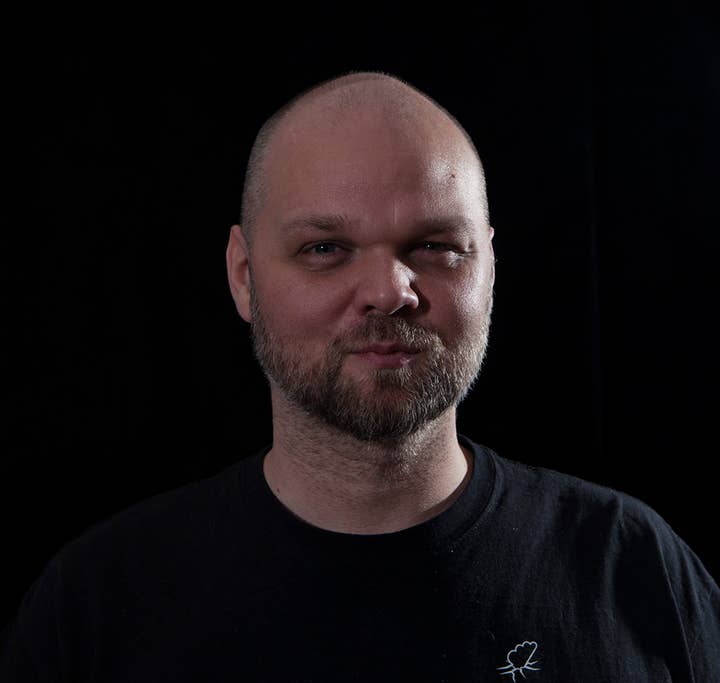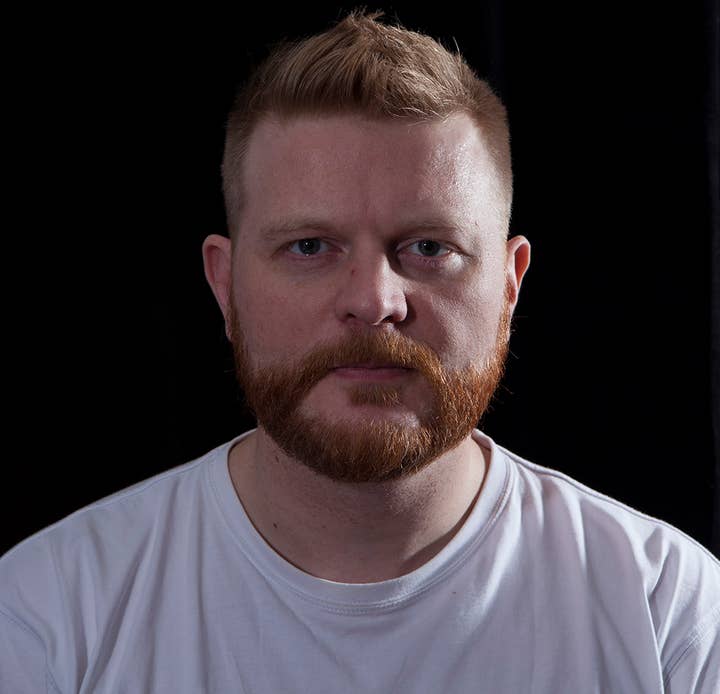"Mobile strategy games haven't really changed in ten years"
Ex-CCP devs Solid Clouds aims to shake up the strategy genre and bridge the gap between desktop and mobile with Starborne
How do you follow Eve Online? It's a question CCP has explored at length with spin-offs such as scrapped shooter Dust 514 and VR poster child Valkyrie, but for ex-employees of the studio without access to the IP or the established audience, it's an even bigger conundrum.
For Stefán Gunnarsson and his team at Icelandic developer Solid Clouds, proving their talents after their time working on the popular sci-fi MMO has been a challenge primarily tackled behind closed doors. Back in 2013, the studio was formed by Gunnarsson and a number of past CCP staffers - including game designer Hrafnkell Oskarsson, art director Asgeir Asgeirson and CCP co-founder and former CEO Sigurdur Arnljotsson - but it is only with 2017 approaching that the team is openly discussing what they have been working on.
Starborne is, like Eve Online, a sci-fi title about space empires and one with a determined focus on community. It's also a massively multiplayer title, and in development for the full trinity of desktop platforms - PC, Mac and Linux - but that's where the comparisons end. The game draws inspiration from board games, has a collectible card system, and brings many elements from the niche but growing 4X sub-genre of strategy games, encompassing its quartet of central pillars: eXplore, eXpand, eXploit and eXterminate.
Moreover, while their former employer has struggled to link Eve Online to other platforms in a meaningful and sustainable way, Starborne aims to bridge the gap between devices from the beginning. While the focus is on the desktop version, a companion app will be made available around the time of the game's soft launch next year, enabling players to continue managing their empire on the move - and a full mobile version is also in the works.

CEO Gunnarsson says the rise of strategy games on smart devices, albeit more casual ones, has made it easier to reach out to mobile users with a complex title like Starborne.
"This type of game is all about the community, and there are some aspects the mobile user will recognise like the empire-building," he tells GamesIndustry.biz. "In the desktop version, you get a much better overview of everything: where you are, what your teammates are up to. For soft launch, we will have a companion app where you can do all the basic actions but you won't have the map you see in the desktop version.
"We want to expand on this. We really feel it hasn't been done before with these kind of games. It's good to differentiate yourself right now."
"We can't compete with Clash of Clans, but there is a big market gap for games like ours. Mobile strategy games have become stale, haven't really changed in almost ten years, and there's not been a lot of innovation."
Stefán Gunnarsson, Solid Clouds
Community manager Arelíus Arelíusarson, who previously served an internship at CCP, adds: "We realised our audience might not be at a desktop computer all day long but would want to be updated about what's happening and maybe take basic actions. It's a gateway drug.
"We're going to have an audience on both sides, and they're going to bleed from one to the other. We're not really worried about competing for the mobile space. I think it's going to come naturally from the desktop space.
"That being said, we are interested in the mobile market and we're going to serve that area with a full version eventually. But we're going to start with the desktop."
Gunnarsson stresses that while the Solid Clouds team plans to bring this big new strategy game, they aren't exactly gunning for Supercell's position just yet: "Budget-wise, we can't compete with Clash of Clans or those kind of studios, but we felt there was a big market gap for games like ours. The core design and gameplay loops in mobile strategy games have become stale, haven't really changed in almost ten years, and there's not been a lot of innovation there.
"I feel there are a lot of players who are very tired of the current mobile market. It's too casual for them, and all about monetisation."

While Solid Clouds might not expect Starborne to pull an audience as sizeable as Clash of Clans' userbase, the team is still confident it will appeal to a significant number of desktop and mobile users - despite its focus on mechanics from a niche genre. Arelíusarson believes the 4X elements actually broadens the game's appeal rather than limits it, claiming that the Icelandic studio is building something that will appeal to both 4X and MMORTS players.
"Even if you're just a board game fan, Starborne is supposed to appeal to you," he says, adding that appealing to these different audience has made it tricky to balance the game: "The 4X player and MMO player will not want the same things. The 4X player will want to survey the land and see where he's expanding, while the MMORTS player will just want to see who he's going to attack next. The balance there between the two gets very tricky and that's something we're going to be working very hard on."
Gunnarsson, meanwhile, points to browser games such as Travian and Tribal Wars as examples the forthcoming game could follow, adding that he predicts Starbone "could have an audience of two to three million players". Notably, that's far more than Eve Online has ever enjoyed, which counts its audience in the hundreds of thousands.
"Just like Eve, this is a community-based game," Gunnarsson says. "There's a lot of players that have been there from the beginning. It might not be the biggest but it's a strong community. In many ways, Starborne will be the same as that - hopefully with more players, though. It's going to be a community-based game and that's where our experience, especially from CCP, comes into play. We know how to build communities and what it takes to maintain them."

Like so many developers today, the biggest challenge Solid Clouds faces is retention - especially as matches in Starborne are designed for up to 25,000 players and last six months. This is not a game about frantic skirmishes whenever the player has a free moment; it's about long-term strategies and building up your forces over time, not unlike a certain sci-fi MMO.
While the game may be designed for tens of thousands of players, Gunnarsson is confident matches will still be enjoyable at around 6,000 players. The main thing, he says, is to have enough players still taking part at the end of each game.
"It's the nature of the games that retention is always dropping from the beginning," he says. "So if you get 25,000 at the start, there will only be 2,000 to 3,000 active by the end. There's really nothing you can do to stop that.
"But it's very important that the people who come in get connected to the other players as soon as possible. In our game, we want players to sense that the map is alive when they enter for the first time. You'll see interactions from other players in your surroundings, whether they are attacking NPCs, trading or something else.
"You can even watch wars from a distance. You have this big beautiful overview that gets updated if big battles are going on. You can use covert operatives on different areas to see interactions on the other side of the map, which stations just got destroyed and so on."
The actions of other users play out on Starborne's massive 3D maps. Using a hexagon-based grid, players will be able to see and interact with planets, suns, asteroid belts and more, and among them will be the space stations, bases and fleets of every player in the game. The ultimate goal is to offer a map that features 1.5m hexagons and loads seamlessly - another reason why Solid Clouds is focusing on the desktop version, while the mobile currently remains a companion portal.

Arelíusarson adds that displaying every action on the map is another example of the board game influences in Starborne: "When you play a board game with five or six of your friends, you're watching the game happen. You're not always participating, you're also watching the game.
The community manager says the key to retaining as many players as possible throughout the multi-month matches is that no single user can be crowned the winner. Instead, the in-game alliances will be vying for victory, which should encourage social interaction even among the less dedicated users.
"Board games are the first form of strategy games. We're looking at what they did right, what's missing from current strategy video games and trying to pick out elements that can be mixed together well."
Stefán Gunnarsson, Solid Clouds
"Even if you're not the strongest player on the map, you can still be a very important cog in the machine that is your alliance," Arelíusarson explains. "They will be using their support to defend against attacks, while other players will be using their positions to make attacks on other alliances.
"As an alliance, it's all about teamwork. Not everyone needs to be the top player in the game to participate in the teamwork."
Of course, with a Starborne match lasting anywhere up to six months, there is the danger that newcomers will be nothing but fodder for the bigger players, barely given a chance to cultivate a space empire before their fleets and bases are ripped to shreds by those with months of resources behind them. Solid Clouds has taken this into account, and will close each map after a few weeks while opening another one for new players. This way, everyone has a chance to contribute to their alliance from the beginning.
Pitting galaxy-spanning alliances against each other in a long-term game of strategy draws yet more comparisons to the ex-CCP team's previous project. Eve is best known for the emergent, player-driven stories of hard-fought battles and inter-alliance espionage, and the hope is Starborne's structure lends itself to a similar experience.
"There will be a lot of political intrigue," says Gunnarsson. "This is just like every other sandbox game. The players will mostly be creating the stories themselves."
Arelíusarson agrees, adding: "If I have somebody on the inside of your alliance and I know where you're going to be landing your big attack, it makes it easier for me to decide where to defend. I can trump your attack with inside information."
So how do you follow Eve? Certainly not by attempting to make a bigger, better version that draws on the strengths of the popular sci-fi MMO as well as games that have been released since. Instead, Solid Clouds have attempted to identify a gap in the market, satisfy the needs of multiple audiences and, crucially, go back to the origins of their genre of choice.
"We're trying to innovate, and it's always good to look at the basics when you do that," says Gunnarsson. "Board games are the first form of strategy games. We're looking at what they did right, what's missing from current strategy video games and trying to pick out elements that can be mixed together well."








